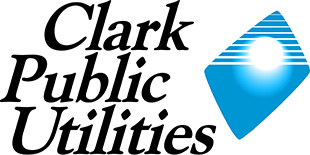For more information:
Mick Shutt, 360-992-3238
Clark Public Utilities begins improvements to Salmon Creek Greenway
August 12, 2010
Clark Public Utilities’ Watershed Enhancement Program will begin construction this month on a bank stabilization and fish enhancement project on the Salmon Creek Greenway.
The project, funded with a Centennial Clean Water Grant through the Washington Department of Ecology, is located in the Salmon Creek Greenway near Klineline Pond. Project partners include the Washington Department of Natural Resources, NW Service Academy, AmeriCorps, Salmon Creek Watershed Council, Clark County Parks and Recreation and Lower Columbia Fish Enhancement Group.
Environmental Services Manager Jeff Wittler said this project would address a number of water quality impairments including turbidity and high stream temperatures. Stabilizing eroding streambanks decreases the amount of sediment (turbidity) in streams. Excessive sediment loads can cover salmon spawning beds preventing salmon eggs from hatching.
Wittler said high sediment loads can also outright salmon through gill trauma, decreases in foraging ability and ability to defend against predators. Large woody debris used in bank stabilization can also create scour pools. These deep pools are harbors of cool water during summer low flows.
The utility will be holding tours during the construction in August and September allowing the public to see stream restoration first hand. Those interested can call 992-8585 to sign up.
The project is part of Clark Public Utilities’ Salmon Creek enhancement program, which was started in 1992 to improve and protect water quality throughout the Salmon Creek basin. The utility provides water service to about 30,000 customers in the area.
Clark Public Utilities’ Watershed Enhancement Program plants 30,000 to 60,000 plants along streams to improve habitat for salmon and other wildlife. The program also installs Large woody debris for fish habitat, provides livestock fencing and non-native invasive removal each year.
Over the past 15 years the utility has planted more than 630,000 trees along 12 miles of stream, installed miles of livestock exclusion fencing, removed tons of garbage, eliminated invasive non-native plants on more than 150 acres and installed 2 miles of in-stream projects to enhance salmon habitat.
